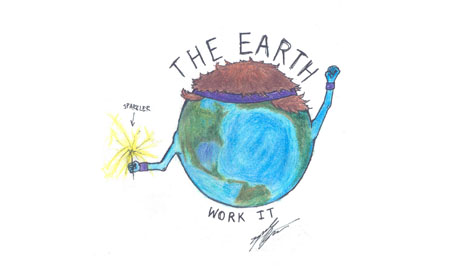Staff Editorial: Dealing With Climate Change

Staff Question: Do you think we’ve done enough to stop climate change over the past decade?
Yes: 0 No: 18
Every generation is defined by something. There have been generations touched by war, population booms, economic hardship, and various catastrophes. But in the future, there will be a new challenge that will confront our generation and, in all likelihood, the generations to come after: climate change.
According to NASA, 2015 was the hottest year on record since the beginning of yearly temperature measurements of the earth’s surface, breaking the record set in 2014. 15 of the 16 hottest years on record have occurred since 2001, and global temperatures have risen by about 1 degree Celsius since the 19th century. According to the EPA, rising temperatures will cause a number of problems in the coming years, including more severe natural disasters such as hurricanes and heatwaves, rising sea levels in coastal areas, and extreme drought in others. If not enough action is taken to slow global warming, the earth we leave to the generations of the future will be a very different, harsher one than the one we know today.
The agreement in Paris between 195 countries to deal with the issue is a huge and historic step in the right direction, and is one of the most important worldwide agreements in the last few decades. The agreement requires the countries to convene every 5 years to set climate goals, the overall aim being to keep the increase in global average temperature since the industrial revolution below 2 degrees Celsius, with an ideal goal to limit the increase to below 1.5 degrees Celsius. The agreement outlined a system in which the countries are held accountable by each other for making sure each nation does it’s part, and help will be available should a country have a major issue caused by climate change. Countries were each required to submit plans to reduce emissions in the interest of making global greenhouse emissions peak as soon as possible, with the plan being to start removing carbon from the atmosphere after 2050.
A large part of the issue has been resistance to change from within our own government. As it stands, there are still high ranking members of the US government that are actively trying to disprove global warming, despite overwhelming evidence and a near-consensus in the scientific community. The main perpetrator of this would be Oklahoma State Senator, Jim Inhofe, who is the author of the book The Greatest Hoax: How the Global Warming Conspiracy Threatens Your Future. Inhofe has created an infamous reputation in the scientific community for being very, very vocal against global warming, which he believes is a hoax created by the liberal population in America. This is the kind of resistance stirred up by oil money in politics that has so greatly impeded progress toward slowing emissions, or helping deal with the problem in any real way.
Such an agreement is a very good sign for the planet and the countries of the world. The fact that so many different governments can come together for the sake of the future is refreshing in the midst of the amount of division that exists in the world today. Equally refreshing is the optimism that the agreement shows, as a goal of limiting warming to 2 degrees Celsius was recently considered unrealistic with the trajectory of emissions being as high as it was. However, the agreement sets a limit at 2 degrees Celsius, with an ambitious and optimistic goal of keeping warming under 1.5 degrees Celsius. It’s the kind of positive and united way of thinking that will be needed if the issue is to be properly handled.
Your donation will support the student journalists of Iowa City High School. For 2023, we are trying to update our video and photo studio, purchase new cameras and attend journalism conferences.

This isn't my first time here. AS per usual, I've been chopping down trees. But I've been doing something different for this fight. So far, I've wrassled...




























